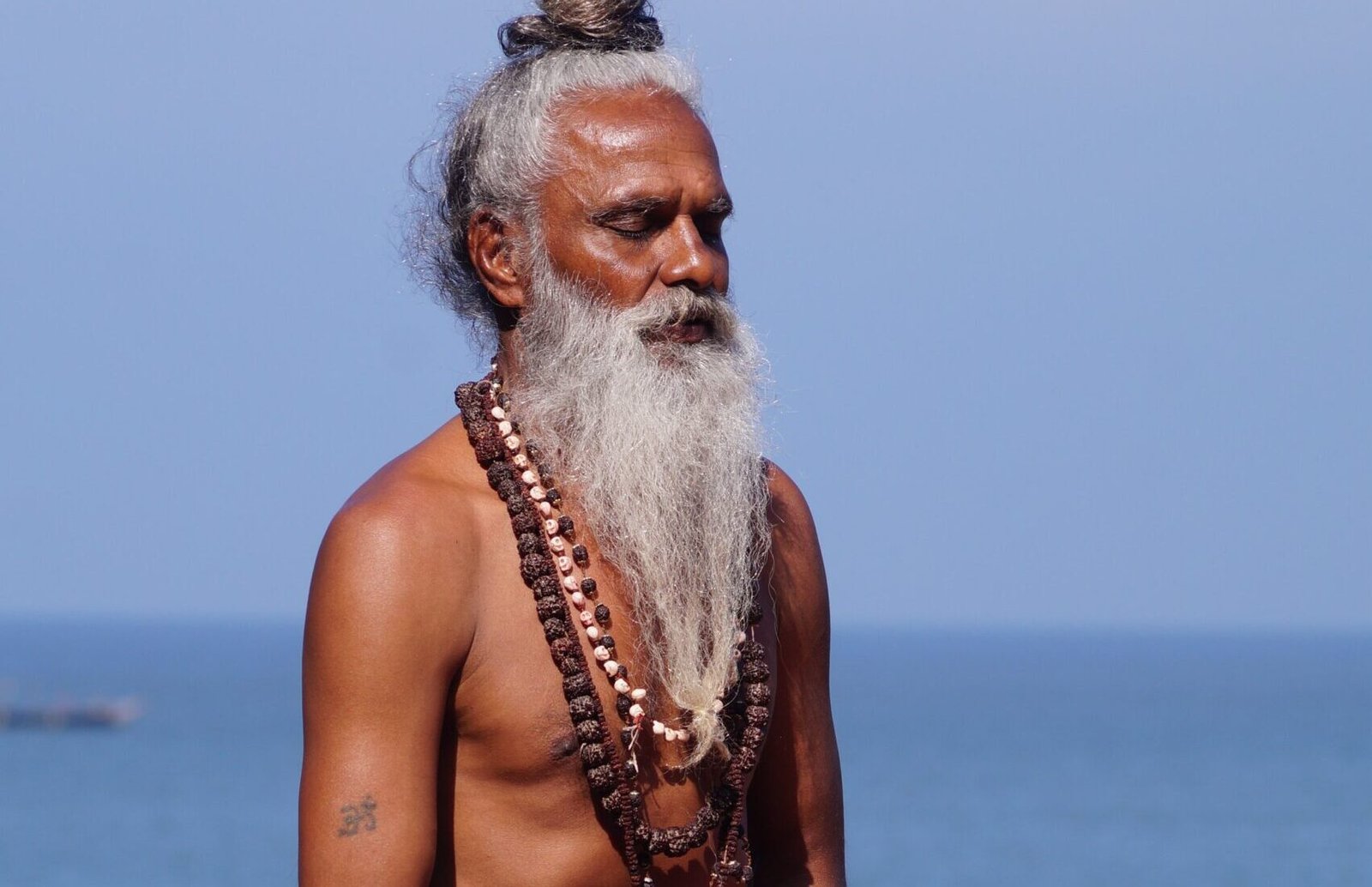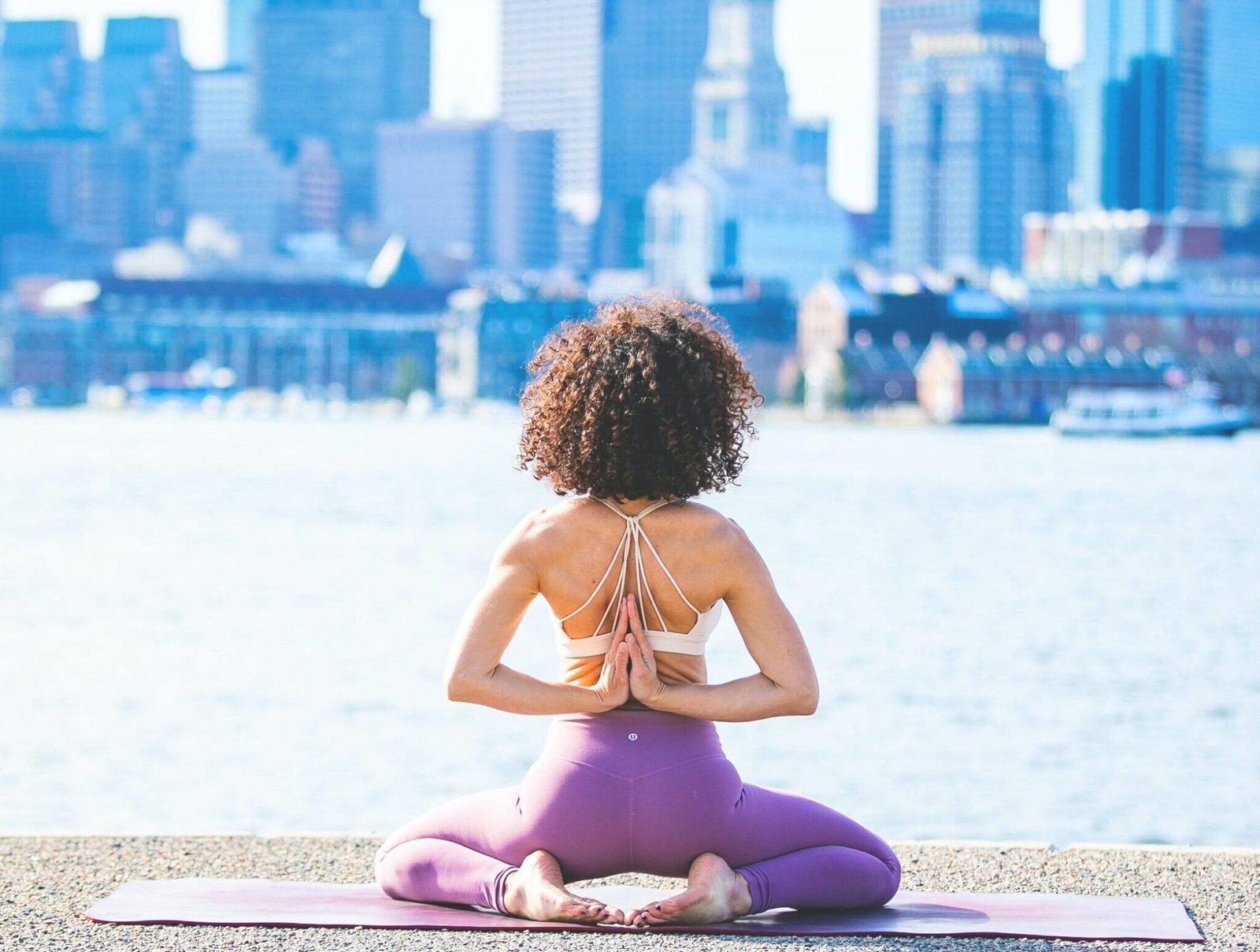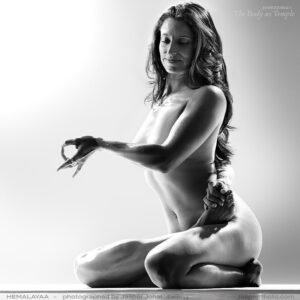There is a common misconception that kundalini yoga is dangerous, but this is not necessarily true. Kundalini yoga is a form of yoga that involves the awakening of the kundalini energy, which is believed to be a powerful force that lies dormant at the base of the spine.
Kundalini Yoga is a radically transformative practice, but should one be cautious when it comes to practicing? In this blog I share my experiences with the Kundalini energy rising and what you should be aware of as you go deep seeking the Kundalini Mathr Shakti.
When the Mathr Shakti is awakened and rises up through the chakras (energy centers in the body), it is thought to bring about cathartic physical, emotional, and spiritual transformation.
While some people have reported intense physical or emotional experiences during or after practicing kundalini yoga, it is important to note that the vast majority these experiences are not necessarily negative or dangerous. In fact, many people find that the practices of kundalini yoga bring about positive changes in their lives.

WHAT ASPECTS OF KUNDALINI YOGA IS DANGEROUS?
It is not accurate to say that any specific aspect of kundalini yoga is inherently dangerous. Kundalini yoga is a spiritual practice that involves physical postures (asanas), breath work (pranayama), and meditation techniques, and these practices are generally considered to be safe when practiced under the guidance of a qualified and experienced teacher.
However, it is important for individuals to be mindful of their own physical limitations and to listen to their bodies when practicing any form of yoga, including kundalini yoga.
It is also important to be aware that some people may experience intense physical or emotional sensations during or after practicing kundalini yoga, and it is important for individuals to have a supportive and safe environment in which to process these experiences.
If you are interested in practicing kundalini yoga, it is important to find a qualified and experienced teacher who can guide you through the practice safely and provide support and guidance as needed.
It is also a good idea to consult with a healthcare provider before starting any new physical activity, if this is of concern.
WHAT IS KUNDALINI YOGA?
Kundalini yoga is a form of yoga that involves the awakening and cultivation of kundalini energy, which is believed to be a powerful force that lies dormant at the base of the spine. Kundalini yoga combines physical postures (asanas), breath work (pranayama), and meditation techniques to awaken and move this energy through the chakras (energy centers in the body).
The goal of kundalini yoga is to bring about physical, emotional, and spiritual transformation by releasing the kundalini energy and allowing it to flow freely through the body. Practitioners of kundalini yoga believe that this process can bring about heightened awareness, improved physical and emotional well-being, and a sense of spiritual connection.
Kundalini yoga is often taught in a specific sequence of postures and breath work, called a “kriya,” which is designed to achieve a specific outcome or benefit. Some common themes in kundalini yoga include physical healing, emotional balance, and spiritual growth.

WHERE DID KUNDALINI YOGA ORIGINATE FROM?
Kundalini yoga is a form of yoga that originated in the Himalayan region of India and Nepal. It is an ancient spiritual practice that has been passed down through oral tradition for thousands of years. The origins of kundalini yoga are somewhat shrouded in mystery, as it is a practice that has been passed down through the ages in a secretive manner.
According to tradition, kundalini yoga was originally taught by the Hindu god Shiva to his consort, the goddess Parvati. For this reason Shiva is known as the “adiyogi” or the first Yogi of the world.
The practice was then passed down through the ages, with the teachings being passed from guru (teacher) to student in a personal and secretive manner.
Kundalini yoga was brought to the West in the late 1960s by Yogi Bhajan, a spiritual teacher who founded the 3HO (Healthy, Happy, Holy Organization) to promote the practice of kundalini yoga in the Western world.
Today, kundalini yoga is practiced by people all over the world, and there are many qualified and experienced teachers who can guide individuals through the practice.
WHAT CAN YOU EXPECT IF YOU PRACTICE KUNDALINI YOGA?
The practices involved in kundalini yoga, including physical postures (asanas), breath work (pranayama), and meditation techniques, are designed to awaken and cultivate the kundalini energy, which is believed to lie dormant at the base of the spine. When this energy is awakened and allowed to flow freely through the body, it is thought to bring about physical, emotional, and spiritual transformation.
Some people who practice kundalini yoga report experiencing a sense of heightened awareness, improved physical and emotional well-being, and a deeper sense of spiritual connection. Other potential benefits of kundalini yoga include increased energy and vitality, improved sleep, and reduced stress and anxiety.
It is important to note that the effects of kundalini yoga can vary from person to person, and it is not uncommon for people to experience a wide range of physical and emotional sensations during or after practicing kundalini yoga. Some people may find the practices to be intense or challenging, while others may find them to be deeply calming and nourishing.

WHAT ARE KUNDALINI YOGA KRIYAS?
Kriya yoga is a spiritual discipline that involves the use of specific techniques, including physical postures (asanas), breath work (pranayama), and meditation, to achieve a state of spiritual realisation or enlightenment.
Kriya yoga is believed to be a powerful and transformative practice that can help individuals achieve a state of inner peace, clarity, and understanding.
Kriya yoga is often associated with the teachings of the Indian guru Paramahansa Yogananda, who brought the practice to the West in the early 20th century and wrote extensively about it in his book “Autobiography of a Yogi.” According to Yogananda, kriya yoga is a “scientific” approach to meditation that involves the use of specific techniques to still the mind and achieve a state of deep inner awareness.
Kriya yoga is typically taught in a specific sequence of postures and breath work, called a “kriya,” which is designed to achieve a specific outcome or benefit. Some common themes in kriya yoga include physical healing, emotional balance, and spiritual growth.
WHAT ARE SOME DIFFERENT KINDS OF KUNDALINI KRIYA YOGA TECHNIQUES?
Here are many different types of kriya techniques that are used in the practice of kriya yoga. Some of these techniques include:
- Physical postures (asanas): Kriya yoga often involves the use of specific physical postures, such as seated meditation poses or standing poses, to help the body and mind relax and focus.
- Breath work (pranayama): Kriya yoga often involves the use of specific breath work techniques, such as alternate nostril breathing or breath retention, to help calm the mind and bring about a sense of inner peace.
- Mantra repetition: Kriya yoga often involves the repetition of specific mantras (sacred sounds) as a means of focusing the mind and connecting with a higher power.
- Mudras (hand gestures): Kriya yoga often involves the use of specific hand gestures, called mudras, as a means of channeling energy and directing the mind.
- Visualisation techniques: Kriya yoga often involves the use of visualisation techniques, such as imagining a particular image or symbol, as a means of focusing the mind and cultivating inner awareness.

HOW IS ISHA KRIYA DONE?
Isha Kriya is a simple yet powerful meditation practice that is taught by the Isha Foundation, a nonprofit organisation based in India. Isha Kriya is designed to help individuals experience a state of inner peace and well-being, and it can be done by anyone, regardless of age, gender, or physical ability.
To practice Isha Kriya, you will need a quiet, comfortable place to sit or lie down. The following are the steps to practice Isha Kriya:
- Find a comfortable seated position, with your back straight and your feet firmly planted on the ground.
- Close your eyes and take a few deep breaths, allowing yourself to relax and let go of any tension or stress.
- Bring your attention to the space between your eyebrows, and focus on the sensation of your breath as it enters and exits your body.
- As you inhale, mentally repeat the word “so” to yourself. As you exhale, mentally repeat the word “hum.” Continue repeating these words in time with your breath for the duration of the practice.
- When your mind wanders or gets distracted, gently bring your attention back to the sensation of your breath and the repetition of the words “so” and “hum.”
- Continue practicing for 15-20 minutes, or for as long as you feel comfortable. When you are finished, take a few deep breaths and slowly open your eyes.
Isha Kriya can be practiced once or twice a day, and it is recommended to set aside a specific time each day to practice.
It is always a good idea to find a qualified and experienced teacher when starting to practice Isha Kriya or any other meditation practice, as the guidance and support of a teacher can be helpful in learning the techniques and getting the most out of the practice.
WHAT ARE SOME BENEFITS OF KUNDALINI KRIYAS?
Kundalini Kriyas are specially designed to unlock the energy centers and allow for the ease of Prana flow. Some examples of yogic kriyas (specific sequences of physical postures, breath work, and meditation techniques) that are used in the practice of yoga include:
- Kriya for cleansing and purification: This kriya involves a series of postures and breath work techniques that are designed to cleanse the body and mind and bring about a sense of physical and emotional balance. Agnisara Kriya is an example.
- Kriya for increasing energy and vitality: This kriya involves a series of postures and breath work techniques that are designed to boost energy and vitality, and to help the body function at its best.
- Kriya for reducing stress and anxiety: This kriya involves a series of postures and breath work techniques that are designed to calm the mind and reduce stress and anxiety. Shunya kriya for example.
- Kriya for improving sleep: This kriya involves a series of postures and breath work techniques that are designed to relax the body and mind and improve sleep.
- Kriya for spiritual growth and self-realization: This kriya involves a series of postures and breath work techniques that are designed to help individuals connect with their inner selves and achieve a sense of spiritual growth and self-realization.

IS KUNDALINI YOGA A RELIGIOUS PRACTICE?
Kundalini yoga is a spiritual practice that is rooted in the ancient Hindu tradition of yoga and is associated with the awakening and cultivation of kundalini energy, which is believed to lie dormant at the base of the spine.
While kundalini yoga is tied to Hinduism, it is a practice that has spiritual dimensions and involve the use of Hindu spiritual concepts and practices, such as Vedic mantra repetition, Yantras and Tantras from Hinduism, and guided visualisation techniques.
Yoga being part of the six philosophies, the shad-darshana, for achieving the goals of a human life, chiefly, fulfilment of desires, prosperity and enlightenment.
Vast majority of people who practice kundalini yoga do so within the context of Hinduism or Sikhism, while others may approach the practice from a more generic perspective.
Kundalini yoga, like any form of yoga, is open to people of all backgrounds and beliefs, and it is a practice that can be tailored to meet the needs and goals of the individual practitioner. A qualified practitioner can help you find a happy medium.
WHAT ARE YANTRAS AND TANTRAS?
Yantras and tantras are practices and techniques that originated in the Hindu and Buddhist traditions of India.
A yantra is a geometric design that is used as a meditation and concentration tool in Hinduism and Buddhism. It is believed to have the power to balance and harmonize the energies of the body, mind, and spirit, and to bring the practitioner closer to the divine. Yantras are often depicted as geometric diagrams or Mandalas, and can be inscribed on a variety of materials, including metal, wood, or stone. Shree Yantra is an example.
Tantra is a spiritual tradition that originated in India and spread to other parts of Asia. It involves the use of rituals, mantras, and yantras to achieve spiritual growth and enlightenment. Tantra practices can include meditations, visualizations, and physical disciplines such as yoga. Some aspects of tantra may also involve the use of sexual practices as a means of achieving spiritual growth and enlightenment.
Both yantras and tantras are considered to be powerful tools for spiritual development and are used by many people as a means of attaining greater spiritual awareness and connection with the divine.
DID KUNDALINI YOGA ORIGINATE FROM SHAIVISM?
According to tradition, kundalini yoga was originally taught by Adiyogi, Hindu god Shiva, to his consort, the goddess Parvati. In Hinduism, Shiva is considered to be the supreme god of transformation and is often associated with the practices of yoga and meditation.
As a result, kundalini yoga is sometimes associated with the tradition of Shaivism, which is a branch of Hinduism that focuses on the worship of Shiva.
Since the Kundalini is the Yogi of warriors, and the militant sects within Hinduism, Devi worship of Goddess Parvati as Durga Amba, the mother of the Universe, is also held in high esteem during Kundalini journeys to balance the masculine Shiva centric practices.
Due to its transformative nature, Sikhism, a militant off shoot of Hinduism also has great affinity for the practice of Kundalini.

IN CONCLUSION, IS KUNDALINI REALLY DANGEROUS?
While the majority of Kundalini practices are safe and anyone with average fitness levels can perform them, intense breathing and holding of postures can be challenging to an unprepared body and mind.
Kundalini journeys are sequenced to facilitate the release of the Kundalini shakti. A knowledgeable practitioner intuitively knows which bodies are good for kundalini light and which bodies can handle the full blown effect of a full on experience.
Just as you wouldn’t give a match to a child who lives in a straw hut, a responsible practitioner knows who to offer the depth of the teachings and who to withhold from.
Even then, the awakening of Kundalini requires prarabdha, or past life karmas, and cannot be guaranteed.
The act of releasing the kundalini shakti, can bring about profound positive change in the psyche, physical body and energetic body.
Matr shakti, the mother power, is a benediction and a gift and all that it unfolds from its release, is a gift as well.
Post a kundalini awakening, you may experience fall out in relationships, abrupt shifts in finances and your own personality may undergo changes that others may no longer find compatible.
Once you are ready to face, whatever may come and are willing to embrace the unknown, you will find the practice of Kundalini Yoga radically transformative.
Your life may never be the same again.




